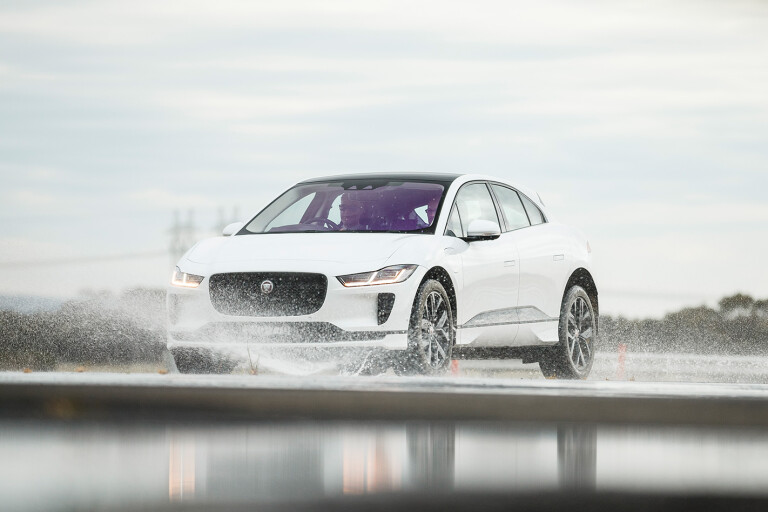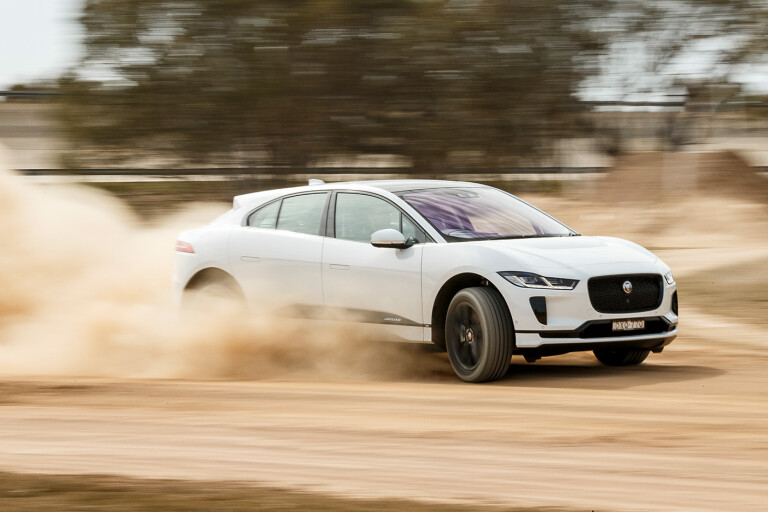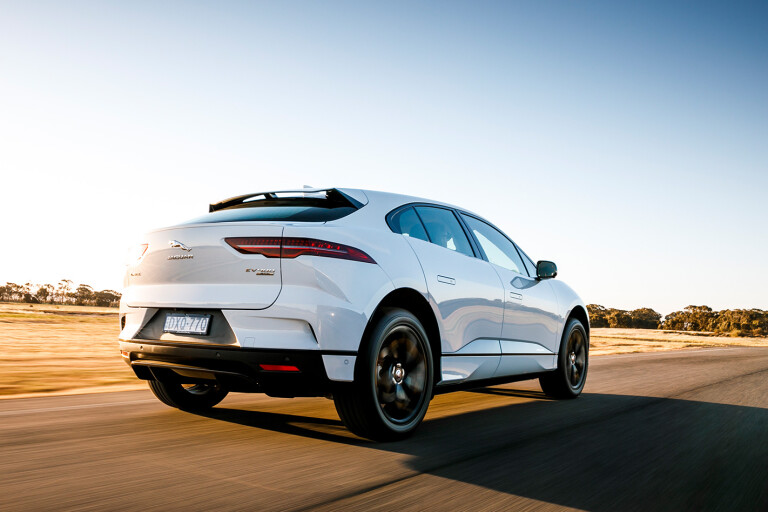
New to Wheels Car of the Year?
Read the COTY 101.
Swishing almost silently onto COTY centre stage for the first time, Jaguar’s only electric vehicle oozed star-quality charisma. Difficult to categorise, and yet an obvious Telsa threat, the I-Pace is like nothing else the Brit brand has produced.

With a big battery pack mounted low between its widely spaced axles, each of them driven by a powerful electric motor, the I-Pace’s drivetrain layout is similar to its only obvious rival, the Model X, and Jaguar claims Tesla-equalling performance and range. But that’s where the similarities end; because while the I-Pace is expensive, it’s far less costly than comparable models in the Model X line-up.
The I-Pace is an EV produced by an experienced car maker, and it shows. Tesla simply can’t manage to build cars with tight panel gaps and consistent quality. Jaguar can, and more than one COTY judge thought the Magna Steyr factory in Austria, where the I-Pace is assembled, deserved a special mention.
Jaguar’s designers, on the other hand, can claim full credit for the I-Pace’s looks. It’s a shape like no other on the road. It’s a high and hefty hatch that’s big but confidently curvy. Jaguar design chief Ian Callum’s crew made the most of the opportunity offered by the EV’s long wheelbase and the minimal overhangs required by its compact motors.

The judges found the Jaguar’s infotainment system easy to like, and there were no complaints about seat comfort, luggage space or fit-out. So far, so normal...
But actually driving the I-Pace on Ford’s You Yangs Proving Ground was anything but. Jaguar claims a sub-5.0 sec 0-100km/h time, but the I-Pace feels faster because of the instantaneous response of its electric motors.

The 90kWh lithium-ion battery pack providing the urge weighs more than 600kg. And, according to Ford’s scales, the I-Pace tops 2200kg. With its weight mostly down low, the Jaguar’s handling feels different. But this is a properly corner-capable car. “So planted,” wrote Noelle Faulkner. “Centre of gravity in the basement.” The heavyweight I-Pace’s great dirt traction and excellent wet braking were also noted.
It scores well for passive safety, too. The I-Pace has earned five-star ratings in both Europe and Australia.

Wheels requested two I-Paces for our COTY testing, one on the standard passive suspension and another on optional air suspension. The steel springs do a fine job, and the EV’s dynamics feel genuinely Jaguar. Spending the extra $2002 buys only marginal improvements in ride comfort and agility.
Until it left the proving ground, the Jaguar seemed to be cruising towards COTY victory. Nothing else in the field could approach its excellent efficiency or amazing acceleration.
There was a lot to like about the I-Pace in real-world use. Judges preferred the regenerative braking set to High. Andy Enright drove the entire 53km road loop in this mode without once touching the brake pedal. The acceleration felt even more awesome and the chassis remained impressive.

But the I-Pace failed to get anywhere near its supposedly realistic 470km WLTP range. Two things became clear over our days driving the Jaguar on public roads. First, the car’s driving-range software cannot be trusted to provide a real estimate of the distance the car can drive on a full or partial charge. When 100 percent charged, the I-Pace would indicate it was ready to drive a distance close to its WLTP figure, but once moving the range plummeted much faster than kilometres were covered.
Second, it became apparent that there was a big difference between the two I-Paces. One had a battery that was good for close to 300km of normal driving, while the other couldn’t get near that number.
Such variance shows worrying inconsistency.
The Jaguar’s COTY contender status was already irreparably tarnished when the program moved to the four-up stage. Here the I-Pace’s lack of rear-seat roominess and the vehicle’s poor rearward vision helped seal its inevitable fate...

COMMENTS